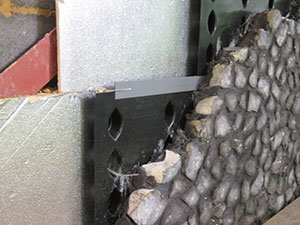Charlie Ayers, founder, SureCav
The introduction of the Domestic Minimum Energy Efficiency Standard (MEES) in 2018 means that all new builds must adhere to a minimum-level of energy efficiency. A positive move by the industry, it has led to carbon emissions from energy use being cut and significantly shaved off costs from homeowners’ electricity bills.
One of the most popular ways of meeting the MEES is by installing effective insulation to keep warm air trapped within a house, so no need for excessive heating. Unfortunately, poorly installed insulation brings risks, as the warm air traps moisture, leading to damp forming or worse, mould. The presence of damp and mould carries adverse health issues for tenants such as respiratory illnesses.

However, it is possible to install effective insulation that will keep moisture down to a minimum while helping achieve the low U-values required by the MEES. Many houses use cavity wall insulation, which, when building with stone or flint, means a layer of insulation in between two layers of concrete blocks. These can be quite porous, allowing water from the outside in, thus increasing moisture levels inside.
Fortunately, new innovations in building materials mean that the outer concrete block leaf can be replaced by a nonporous, polypropylene sheet that maintains an effective air gap, an essential element in cavity wall construction. This will seal the wall against wind-driven rain and other outside moisture, keeping the insulation within dry and preventing the formation of damp and mould.
It is crucial that we push for more sustainable construction practices, and reducing operational emissions of buildings through a focus on energy-efficiency is an excellent approach to this issue.
However, it is important that housebuilders do not rush to install insulation without considering conditions for tenants within a new build. Taking the time to research what products are available that will achieve both strong U-values and protect residents from damp needs to be the way forward.
- Log in to post comments















